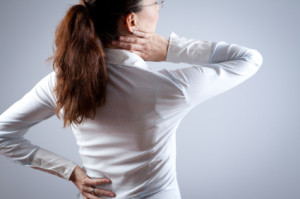- Calls to this hotline are currently being directed to Within Health, Fay or Eating Disorder Solutions
- Representatives are standing by 24/7 to help answer your questions
- All calls are confidential and HIPAA compliant
- There is no obligation or cost to call
- Eating Disorder Hope does not receive any commissions or fees dependent upon which provider you select
- Additional treatment providers are located on our directory or samhsa.gov
The Connection Between Chronic Pain and Eating Disorders

Contributor: Staff at Sierra Tucson
The mind and body share a powerful connection, making overlap between mental and physical symptoms quite common. When it comes to eating disorders, the presence of physical chronic pain can be a cause, trigger, or result of the mental health condition. No matter the cause, treating the physical pain associated with an eating disorder is essential for long-term wellness.
Why Chronic Pain and Eating Disorder Symptoms Often Coexist
For many, eating is a way to escape and cope with the stress of daily life. Those who are experiencing physical pain may use food as a distraction or restrict their diet if eating worsens their symptoms. Both of these behaviors could lead to disordered eating, but for many, chronic pain is just a trigger for an eating disorder that is already present.
Jennifer Leavey, who has lived with an eating disorder for years, explains how migraine pain interfered with her recovery. Leavey says, “I’ve dealt with chronic pain for years now, but pain at this level for this long is obviously anxiety-provoking. When I get more anxious, the urge to binge creeps in on me” [1].
To compensate for episodes of bingeing, Leavey would then restrict her food intake in an attempt to gain control. She explains, “The only way to control the emotional pain my eating disorder causes is to focus on my physical pain” [1].
The Effects of Chronic Pain on Eating Disorder Diagnoses
The existence of physical pain can not only trigger eating disorder symptoms, but it might also prolong the time it takes for eating disorder treatment to be received.
In a study, two groups of eating disorder patients were tracked over the course of six years. The first group displayed eating disorder symptoms alone, while the second group reported eating disorder symptoms as well as chronic pain. The group that struggled with chronic pain had an eating disorder that went undiagnosed for twice as long as the group that didn’t have chronic pain [2].
These findings help reveal the dangers of eating disorders that coexist with physical pain. An eating disorder that is masked by chronic pain could lead to years of damage to the body. Prompt treatment for an eating disorder is extremely important, as eating disorders involve a high risk of mortality.
Chronic Pain as a Result of Untreated Eating Disorders
The symptoms of eating disorders often overlap with those of chronic pain conditions. Eating disorders can result in an array of negative effects on the body, especially the stomach and digestive system.
 Physical symptoms of an eating disorder can include:
Physical symptoms of an eating disorder can include:
- Stomachaches and cramps
- Diarrhea
- Indigestion
- Heartburn
- Bloating
- Constipation
One common risk associated with untreated eating disorders is the development of osteoporosis. Osteoporosis is an extremely painful condition that can result in bone loss. While this condition is more common in older individuals, untreated eating disorders like anorexia and bulimia can cause its development at a much younger age.
Some who struggle with eating disorders may also experience problems with the liver, kidney, and heart, sometimes to the point of organ failure.
Individuals might see a doctor for their physical symptoms and be diagnosed with a different medical condition, leaving the eating disorder undetected. The longer an eating disorder goes undiagnosed, the higher risk there is of damage to the body.
Treating the Cycle of Chronic Pain and Eating Disorders
When it comes to eating disorders and chronic pain, finding a treatment facility that can help with pain management can be very beneficial. One study found that nearly 20% of young people who were referred to an eating disorder treatment program had a prior diagnosis of chronic pain [2].
A team of professionals can help you get to the source of your physical pain to alleviate its impact on your eating disorder treatment progress. Whenever multiple conditions are present, they should be treated simultaneously to help ensure a full recovery.
If you are struggling with eating disorder symptoms along with chronic pain, help is available.
References:
[1] Leavey, J. (2017, October 11). When my eating disorder and chronic pain collide. The Mighty. https://themighty.com/2017/10/chronic-pain-eating-disorder-binge/ [2] Doheny, K. (2017, February 3). Undetected pain common in teens with eating disorders. Practical Pain Management. https://www.practicalpainmanagement.com/resources/news-and-research/undetected-pain-common-teens-eating-disordersAbout Our Sponsor:
Located in Tucson, Arizona, Sierra Tucson is the nation’s leading residential and outpatient treatment center for eating disorders.
The opinions and views of our guest contributors are shared to provide a broad perspective on eating disorders. These are not necessarily the views of Eating Disorder Hope, but an effort to offer a discussion of various issues by different concerned individuals.
We at Eating Disorder Hope understand that eating disorders result from a combination of environmental and genetic factors. If you or a loved one are suffering from an eating disorder, please know that there is hope for you, and seek immediate professional help.
Published April 3, 2024, on EatingDisorderHope.com
Reviewed & Approved on April 3, 2024, by Baxter Ekern, MBA

The EatingDisorderHope.com editorial team comprises experienced writers, editors, and medical reviewers specializing in eating disorders, treatment, and mental and behavioral health.

